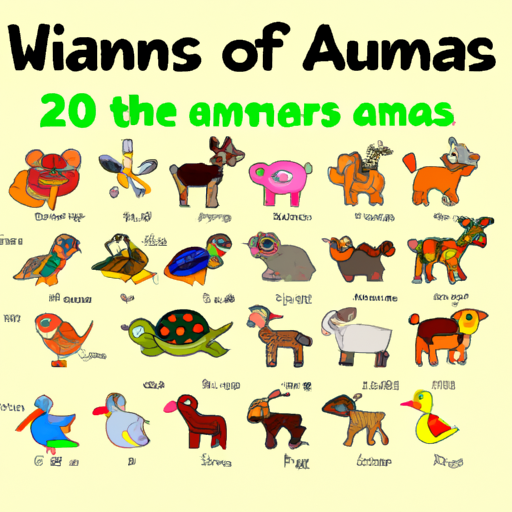 Introduction:
Introduction:
In the early stages of a child’s development, it is crucial to expose them to a wide range of experiences and knowledge. One area that particularly captures a young child’s fascination is the animal kingdom. Understanding the importance of animals can help foster empathy, curiosity, and a sense of wonder in children. In this article, we delve into the question of how many animals a three-year-old should know, highlighting the benefits and offering practical suggestions for expanding their knowledge.
The Significance of Animals in Early Childhood Development:
Animals play a vital role in a child’s cognitive, emotional, and social development. By introducing children to animals, they learn about diversity, empathy, and the natural world around them. Animal knowledge helps children develop language skills, observational abilities, and nurtures curiosity and problem-solving skills. Moreover, studies have shown that children who have a strong connection with animals exhibit higher self-esteem and better emotional regulation.
1. Domestic Animals:
At the age of three, children should have a basic understanding of common domestic animals such as dogs, cats, rabbits, and birds. These animals are often encountered in everyday life, making it easier for children to associate them with their respective names and characteristics. Parents and caregivers can facilitate this learning through books, toys, real-life encounters, and visits to petting zoos or farms.
2. Wild Animals:
Introducing three-year-olds to the world of wild animals is equally important. While it may be challenging for them to comprehend complex concepts, it is recommended to begin with iconic animals like lions, tigers, elephants, giraffes, and bears. Books, educational videos, and interactive toys can aid in familiarizing children with these animals, their habitats, and distinctive features.
3. Marine Creatures:
Exploring marine life can captivate the imagination of young children. Introducing them to creatures like dolphins, whales, sharks, and tropical fish can expand their understanding of the animal kingdom. Utilize visual aids like picture books, documentaries, and visits to aquariums to help children recognize and appreciate marine animals.
4. Insects and Reptiles:
While some parents may feel hesitant about introducing their children to insects and reptiles, these creatures offer unique learning opportunities. At this age, three-year-olds can begin recognizing insects like butterflies, ladybugs, and bees. Additionally, they can learn about reptiles such as turtles, snakes, and lizards. Parents can incorporate educational materials, children’s shows, and age-appropriate encounters to engage children in learning about these creatures.
5. Extinct and Mythical Animals:
While not essential, exposing children to extinct animals like dinosaurs and mythical creatures like dragons and unicorns can fuel their imagination and curiosity. Utilize age-appropriate books, puzzles, and interactive games to introduce these animals, fostering an interest in history, mythology, and storytelling.
6. Habitats and Ecosystems:
At this age, children can start grasping the concept of different animal habitats and ecosystems. Introduce them to environments such as forests, deserts, oceans, and the Arctic. Enhance their understanding by explaining basic concepts like food chains, climate, and the interdependence of species.
Conclusion:
The animal world offers a vast and fascinating realm for young children to explore, providing numerous benefits to their overall development. By introducing a wide variety of animals to three-year-olds, parents and caregivers can nurture their curiosity, empathy, and understanding of the natural world. Through books, interactive toys, real-life experiences, and educational materials, we can create a solid foundation for a lifelong appreciation of animals and their importance. Remember, it is not about the quantity of animals a child knows, but the quality of their experiences and the depth of their understanding that truly matters.
